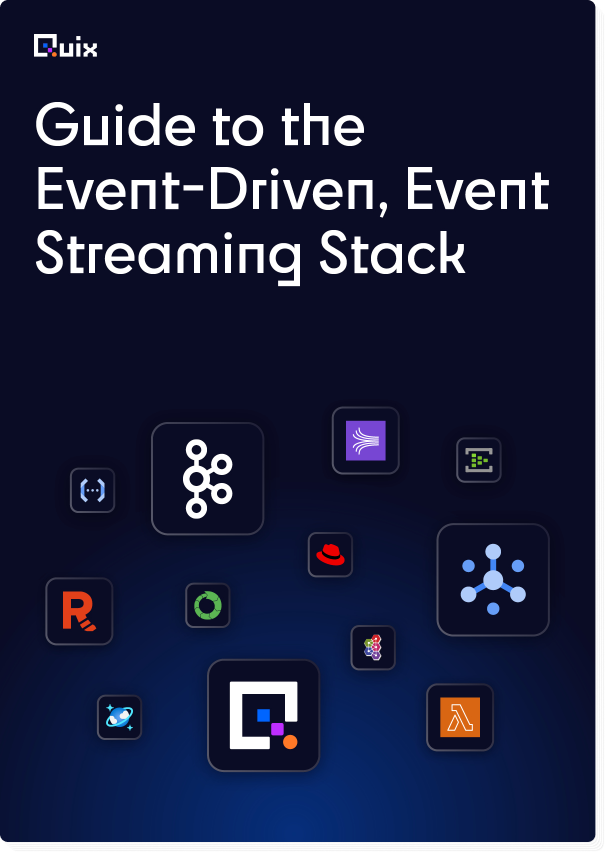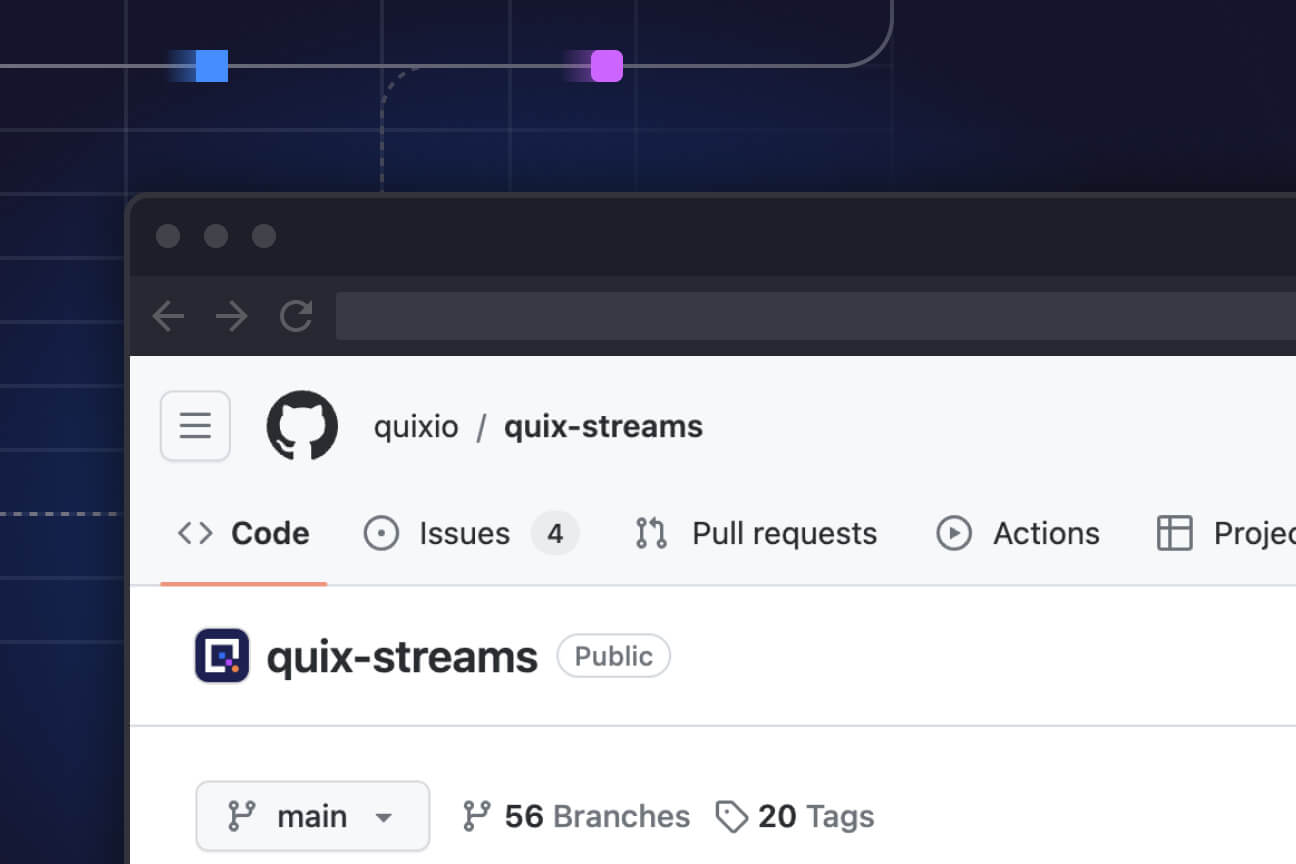Using streaming data to personalize everything from house hunting to healthcare
How in-memory data processing is improving personalized customer experiences across industries
Real time data processing enables companies to deliver superior personalized experiences tied to the user’s in-the-moment needs
We live in a world of real time digital interactions: the feeds on our phone, the magic behind collaboration tools and the apps on our watch that remind us to squeeze a few more steps into our day.
From smartphones to smart houses, we tailor these digital experiences to fit like a comfortable pair of jeans. Our personal devices “know” our schedules and preferences. They anticipate our needs and offer helpful answers even before we ask the question.
“80% of US adults said they want personalization from retailers, according to a survey from Epsilon and GBH Insights.”
People are accustomed to the highly individualized digital experiences that smart devices deliver. While logically customers might understand that a brand’s website isn’t going to be as personalized as the app experience on their phones, personalized experiences still set a high bar.
In fact, 80% of US adults said they want personalization from retailers, according to a survey from Epsilon and GBH Insights.
To meet the demand for more relevant, personalized experiences, companies need to change the way they process consumer data. Specifically, they need to stop collecting data and dumping it into data lakes and warehouses — and start processing data the moment it is created (when it’s most relevant), in a data stream.
Let’s look at why current personalization efforts are falling short of customer expectations, and how real time data processing can help you deliver better user experiences.
Why personalization falls short of customer expectations
How you manage customer data plays a huge role in your personalization capabilities. Traditional methods of personalization rely on batch-processed data that artificially groups people into personas. Personalization tools use these personas and historic customer data to add things like name, past orders and recommendations to pages as they’re built.
There are two main shortcomings with this approach:
- Batch processing relies on historical data and misses data from the person’s current interaction with your site or app. As people interact with apps and devices, they leave digital fingerprints that offer insights into their mood, preferences and needs in that moment. These are the clues companies need to pick up on, so that a customer doesn’t get a coupon for a product that they just returned or feel the frustration of providing the same information multiple times.
- It misses the opportunity to combine customer data with additional data streams to hyper-personalize the experience. Some retailers combine personal preferences and customer data with things like real time geolocation and weather data streams to deliver hyper-personalized offers. For example, on a chilly day they can ping nearby customers with an offer for 10% off a bowl of their favorite soup or winter gear.
People are more than their personas. As individuals, they want the brands they love to meet even unexpressed needs — like a good host anticipating a guest’s likely desires based on observation in the moment.
Gladly’s 2021 Customer Expectations Report found that 81% of consumers believe customer service falls below expectations and lack of personalization topped their list of complaints. “Knowing a customer’s name, their order number, and their purchase history before the conversation begins are now table stakes when it comes to delivering great service,” asserts the report.
The report delivers a chilling warning to brands: 51% of people will switch brands after just one or two bad experiences. But on the positive side, 77% of people say they will recommend brands that provide more personalized experiences.
Companies are struggling to manage data at the speed and scale needed
Consistently delivering the advanced levels of personalization that customers want is hard — and the stakes are high. McKinsey identifies these challenges to personalization:
Source: McKinsey
Real time data processing is the future of personalization
Processing customer data in real time enables companies to provide the personalized experiences people want. It closes the user experience gap inherent in batch processing.
Here’s the difference:
- With traditional batch processing applied to personalization, data is collected, then processed, and finally delivered back to company systems on a defined schedule (in a batch), which could be hours, days or weeks.
- With stream processing, customer data is collected and processed in real time — in a matter of milliseconds — as it streams in from multiple sources.
Real time data processing, also called streaming data processing or in-memory processing, can help customer service representatives understand why a customer is calling before they pick up the phone. Combined with machine learning, it can even help prevent or solve the problem before a customer calls.
This combination of data stream processing, ML and automation aligns with the personalization operating model recommended by McKinsey. “At the core of the personalization tech is a centralized decisioning engine, or ‘brain,’ that is capable of interacting with each outlying system to consistently make real time decisions based on consumer signals. This technology can coordinate content offers across audiences and channels in real time and help teams adjust them based on feedback.” Read more in McKinsey’s “No customer left behind: How to drive growth by putting personalization at the center of your marketing.”
Real time data processing helps Trulia deliver “personal relevancy” at scale
Trulia faces the challenge of matching hundreds of millions of individuals with hundreds of millions of houses that are just as unique as the people who buy them. Processing all that information on house hunters and houses for sale to deliver the perfect match requires massive computing resources and complex data analysis. And the data is constantly changing.
To deliver the most relevant matches, Trulia collects billions of user events (house views, search criteria, etc.) in real time and processes those into user traits. This massive undertaking uses a combination of batch processing and streaming data processing to keep the computed user traits up-to-date in real time.
“This transformation allows us to view each user’s sequence of activities in time order, and run data science models and business rules to capture various personalized consumer insights,” Trulia explains on their blog: Personalization Hub.
Individualized experiences make people’s lives better
The applications of streaming data processing are exciting for businesses and for the people they serve. Consider the healthcare industry. The average person will likely generate more than one million gigabytes of health-related data from fitness trackers, medical devices, implants and other connected devices, according to IBM’s report “The future of health is cognitive”.
All that data has the potential to transform an overburdened healthcare industry and improve patient outcomes. Streaming data processing turns data into actionable insights when every second counts.
At the University of Chicago Medicine, researchers developed a predictive algorithm that uses TIBCO’s streaming analytics platform to predict when cardiac arrest is likely to happen and alerts the rapid response team. Within a few hours of going live, the system had already prevented the first cardiac arrest and is now credited with reducing the number of cardiac arrests in the hospital by an estimated 15% to 20%.
Etiometry, a provider of clinical decision-support software for critical care, is also tapping into data streams to help prevent adverse events in intensive care settings. The backbone of their products is a risk analytics engine that uses advanced algorithms to combine and continuously convert multiple streams of raw data into near real time clinical information.
This is used to continuously update a dynamic model of the patient as more information is captured (e.g. vital signs, ventilator information, lab results). As a result, the software can predict the likelihood of adverse events to help busy doctors prioritize the patients who need them most. In some cases, the software can even automate and deploy appropriate protocols to manage complications and aid recovery.

Quix empowers you to using streaming data now
Using streaming data for personalization has applications for every industry. Just imagine how much better your customer and business outcomes could be if you operationalized real time data — not just processing but also automating responses to the data.
Problems could be prevented before they occur, in-product support can accurately anticipate what the user needs, product recommendation engines could deliver better results, and hyper-personalized experiences would show customers they are valued as individuals.
It’s all possible, but building streaming data infrastructure is hard — that’s why it’s been the sole domain of Big Tech companies until now. In fact, it can be prohibitively hard for companies to get started. That’s where Quix can help.
Quix is on a mission to democratize access to streaming data processing. We built our platform to put the power of streaming data into the hands of data scientists, data engineers and citizen developers so that you can work with streaming data in the languages you love without worrying about the backend infrastructure.
Quix includes all the components you need tap into the data stream with Python or C#. We provide documentation and SDKs to speed up the learning curve so that you can start coding and using streaming data faster.
Give us a test drive today — sign up for a free Quix account to see how easy it is to build with Quix, or try our no-code car racing game demo to see the power of stream processing in action. You can also join us in our community Slack.
What’s a Rich Text element?
The rich text element allows you to create and format headings, paragraphs, blockquotes, images, and video all in one place instead of having to add and format them individually. Just double-click and easily create content.
Static and dynamic content editing
A rich text element can be used with static or dynamic content. For static content, just drop it into any page and begin editing. For dynamic content, add a rich text field to any collection and then connect a rich text element to that field in the settings panel. Voila!
How to customize formatting for each rich text
Headings, paragraphs, blockquotes, figures, images, and figure captions can all be styled after a class is added to the rich text element using the "When inside of" nested selector system.

Check out the repo
Our Python client library is open source, and brings DataFrames and the Python ecosystem to stream processing.

Interested in Quix Cloud?
Take a look around and explore the features of our platform.

Interested in Quix Cloud?
Take a look around and explore the features of our platform.







